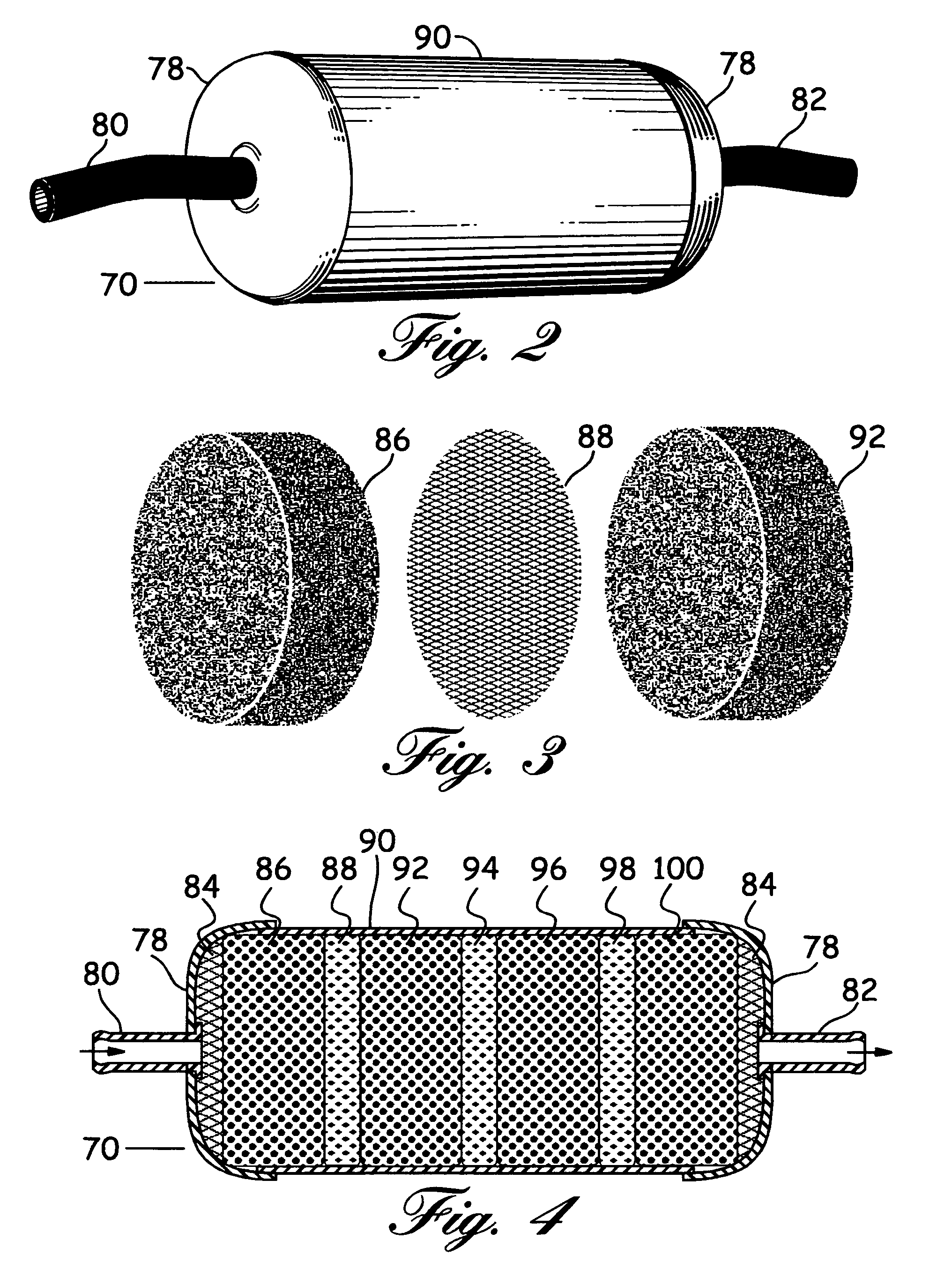Emissions reduction system for an internal combustion engine
a technology of emission reduction and internal combustion engine, which is applied in the direction of machines/engines, mechanical equipment, and non-fuel substance addition to fuel, etc., can solve the problems of inability to leave excessive amounts of water in the intake path, lack of adequate control means, and inherent dangers of human exposure, so as to improve performance, reduce harmful emissions, and increase fuel efficiency
- Summary
- Abstract
- Description
- Claims
- Application Information
AI Technical Summary
Benefits of technology
Problems solved by technology
Method used
Image
Examples
Embodiment Construction
[0043]The FIG. 1 drawing depicts a piston engine 10, equipped with an air intake housing 12, containing an air filtering device 14, connected to a turbocharger compressor 16 that sends compressed air to an air intake port 18, having an exhaust port 22 and an exhaust system path 24 for the dispersion of combustion gases expelled by said engine 10. Said engine 10 is started by switching power to engine ignition system 72, connected to a DC power supply 68. An electronic control module 20 is powered on at engine start-up and begins to monitor all system sensors: (42, 44, 46, 48, 52 and 66). Simultaneously, as fuel enters said engine 10 through a fuel delivery system 32, said fuel passes from a fuel supply tank 26 and through a catalytic fuel conditioning unit 70 before being consumed by said engine 10. When said engine 10 is under a load, a thermal sensor 46 near said exhaust port 22 signals a valve 62 to close and a valve 28 to open and a pressurizing means 36 transfers water from sai...
PUM
 Login to View More
Login to View More Abstract
Description
Claims
Application Information
 Login to View More
Login to View More - R&D
- Intellectual Property
- Life Sciences
- Materials
- Tech Scout
- Unparalleled Data Quality
- Higher Quality Content
- 60% Fewer Hallucinations
Browse by: Latest US Patents, China's latest patents, Technical Efficacy Thesaurus, Application Domain, Technology Topic, Popular Technical Reports.
© 2025 PatSnap. All rights reserved.Legal|Privacy policy|Modern Slavery Act Transparency Statement|Sitemap|About US| Contact US: help@patsnap.com



